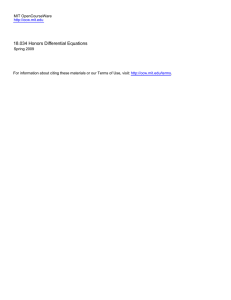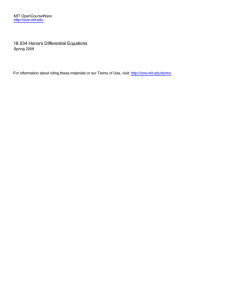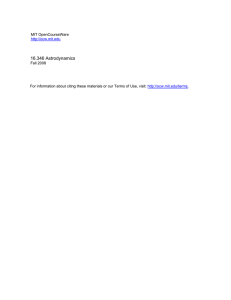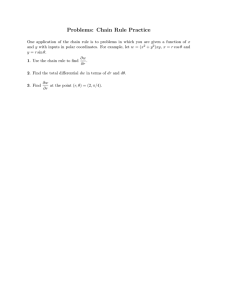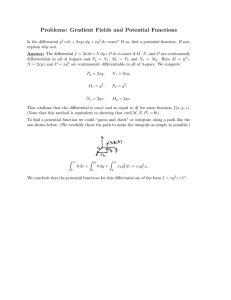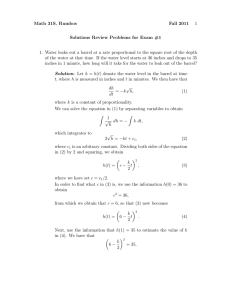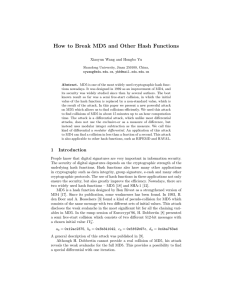Exponential Growth and Inhibited Growth
advertisement
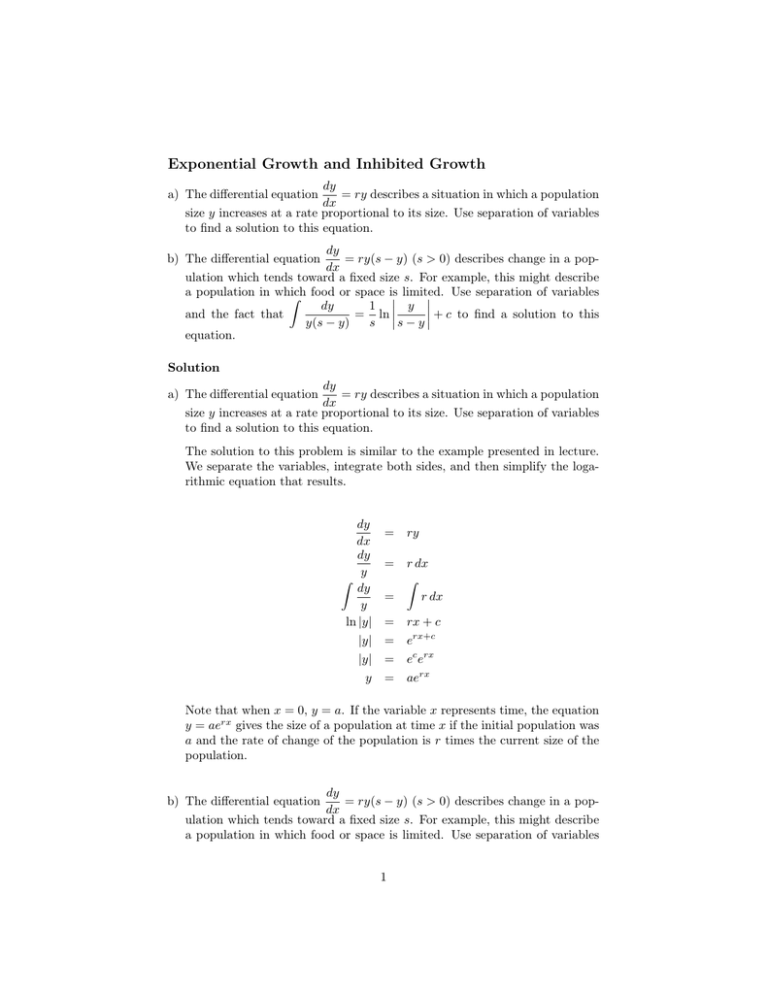
Exponential Growth and Inhibited Growth dy a) The differential equation = ry describes a situation in which a population dx size y increases at a rate proportional to its size. Use separation of variables to find a solution to this equation. dy b) The differential equation = ry(s − y) (s > 0) describes change in a pop­ dx ulation which tends toward a fixed size s. For example, this might describe a population in which Use separation of variables � � food or space is� limited. dy 1 �� y �� and the fact that = ln � + c to find a solution to this y(s − y) s s − y� equation. Solution dy a) The differential equation = ry describes a situation in which a population dx size y increases at a rate proportional to its size. Use separation of variables to find a solution to this equation. The solution to this problem is similar to the example presented in lecture. We separate the variables, integrate both sides, and then simplify the loga­ rithmic equation that results. dy dx dy y � dy y ln |y| = ry = r dx � = r dx = rx + c |y| = erx+c |y| = ec erx y = aerx Note that when x = 0, y = a. If the variable x represents time, the equation y = aerx gives the size of a population at time x if the initial population was a and the rate of change of the population is r times the current size of the population. dy b) The differential equation = ry(s − y) (s > 0) describes change in a pop­ dx ulation which tends toward a fixed size s. For example, this might describe a population in which food or space is limited. Use separation of variables 1 � and the fact that � � dy 1 � y �� = ln �� + c to find a solution to this y(s − y) s s − y � equation. Before we start solving the problem, let’s think about what the equation dy = ry(s − y) says about the rate of change in population. Notice that dx y(s − y) is positive for 0 < y < s and negative otherwise. If the size y of dy the population is greater than s, the rate of change is negative and the dx population shrinks until y ≤ s. This differential equation can also be solved by separation of variables, but the antidifferentiation involved is more difficult. dy dx dy y(s − y) � dy y (s − y ) � � 1 y ln s s−y � � � y � � � ln � s − y� � � � y � � � �s − y � y s−y y y + yaesrx y = ry(s − y) = r dx (separate variables) � = r dx (integrate both sides) = rx + c = s(rx + c) = esrx+c = aesrx (use the hint provided) (simplify) � = aesrx (s − y) = saesrx saesrx = 1 + aesrx Note that as the value of x approaches infinity, the value of y approaches s. Our original analysis of the differential equation suggested that the value of y would increase when it was below s and decrease if was above s, so it is not surprising to find that the value of y tends toward the value of s. 2 MIT OpenCourseWare http://ocw.mit.edu 18.01SC Single Variable Calculus�� Fall 2010 �� For information about citing these materials or our Terms of Use, visit: http://ocw.mit.edu/terms.

